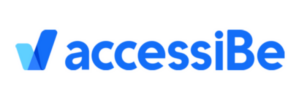Web accessibility boosts SEO rankings, generates more leads, and protects your business from accessibility lawsuits
Did you know that about 20% of the population has disabilities that limit their ability to use websites?
Disabilities that can prevent people from effectively using websites include:
- Blindness
- Motor and Mobility
- Color Blindness
- Epilepsy
- Blurred Vision
- Cognitive Disorders
- Aging
- Cataracts & More
Today, by the power of the Americans with Disabilities Act (ADA), every business website has to be accessible to people with disabilities. The Law prohibits discrimination based on disability by places of “public accommodation”, meaning websites or brick-and-mortar facilities.
People with disabilities, specifically those who are blind or visually impaired, have been filing lawsuits against businesses over website accessibility issues, and many of them were winning.
What Is Website Accessibility?
Non-technically, it’s giving someone with a disability, like limited or no sight or hearing, the ability to experience all elements of your website. For example, someone without sight cannot see images or form fields on your website, so they need alternative text to inform the content of each image. Someone without hearing cannot listen to a narrated video, so they need captions.
The Increase in Web Accessibility (ADA) Lawsuits & Demand Letters
- 200% increase in lawsuits and demand letters from 2017 to 2018
- DOJ affirms ADA applies to websites since November 2018
- 2019 tripled 2018 in papers served
- Over 150,000 demand letters served to businesses since 2017
- 93% of demand letters settle outside of court for $20,000 – $150,000 on average
Having a fully accessible website protects your business from ADA Lawsuits.
Watch this podcast to learn more about website assessibility and why every business needs to be compliant.
Watch the Website Accessibility Podcast Episode Now
Bonus! Having a fully accessible website helps with Search Engine Optimization (SEO) and website conversions!
Rough 20% of the population have a disability that could prevent them from fully accessing your website. If they visit your website and can’t fully use it they:
- Might never become a customer because they either can’t use your website or get frustrated trying to use it
- Bounce quickly because the site isn’t usable for them (this impacts SEO)
- Become a customer of a competitor that has a fully accessible website
We found an automatic, simple, and affordable solution – an AI automatic system that can achieve full ADA compliance within 48 hours and provides 24/7 automatic compliance maintenance. It also:
- Achieves Compliance Requirements to meet the WCAG 2.1
- Rescans every 24 hours using AI for maintenance
- Explains all the adjustments the website has undergone
- Doubles as a certification of performance
- Provides proof of doing the required compliance work
- Sends the Accessibility Statement over email and displays it within the interface
The company that developed the system is accessiBe. After reviewing their system and testing it on our own website, we decided to offer the same solution to all of our clients.

“With more customers searching to find a business online, our goal was to find a solution that allows our clients to comply with accessibility guidelines and continue to comply regardless of how many ongoing changes they make to their sites, without any additional effort on their part. accessiBe provides exactly that. The solution is easy to implement, affordable and helps businesses mitigate the risk of lawsuits. But most importantly, it enables our clients to provide a better online experience to those with disabilities.”– Ken Tucker, Marketing Solution Architect.
Have questions about Website Accessibility and Compliance?
To set up a time to chat and grab a time on my calendar
Watch this podcast to learn more about website assessibility and why every business needs to be compliant.